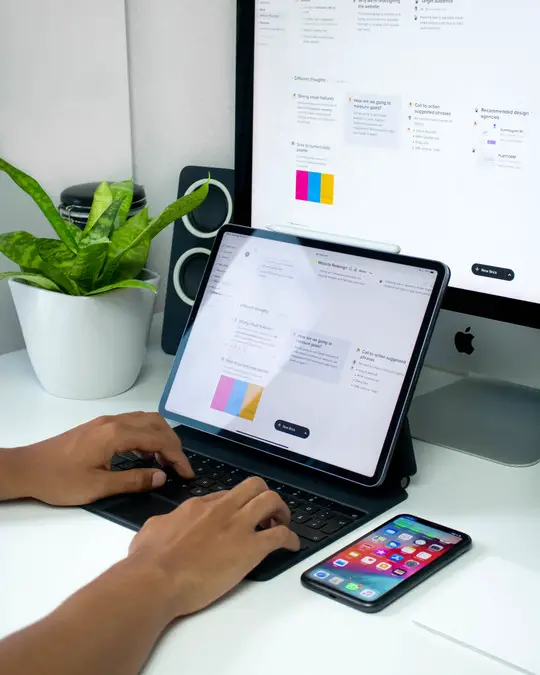Setting Up Your Own Website
There are a variety of reasons why you may want to set up your own website. For one thing, establishing a website provides you with an online presence, allowing people to find you or your business easily. Additionally, a well-designed website enhances a business’s professional image and credibility, making a positive impression on customers or your targeted audience.
For individuals, a website serves as a platform to showcase skills, a portfolio, or display achievements, helping to build and strengthen your personal brand. For businesses, a website is a crucial tool for reaching a wider audience, attracting potential customers, and expanding your market reach.
A website is always accessible, providing information to users around the clock, irrespective of time zones or business hours. Your website can end up serving as a central hub for your marketing efforts. You can promote products, services, or content through various online marketing strategies.
A website allows you to reach a global audience, breaking geographical barriers and tapping into new markets. It can also become a platform for communication with your audience through features like contact forms, comments, or live chat enable interaction and feedback.
Lastly, your website can evolve with your needs. Whether you start with a basic site and expand over time or modify content based on changing goals, a website is adaptable to your requirements. So now that we have detailed all the many benefits of creating a website, let us look a bit closer at the basic steps to setting one up.


Choosing a Website Name
Choosing the right website domain name is a crucial step, as it plays a significant role in your online identity. Ensure that your domain name is relevant to the content, purpose, or brand of your website. It should give visitors a clear idea of what to expect.
The name of your website should in some way contain words associated with what your business or subject matter is. For example, websites offering opportunities to play bingo online would choose something like bingotastic.com or a collectible coin shop wanting to promote their business online may opt for a website name like numismatictreasures.com.
Aim for a name that is easy to remember. Short, simple, and catchy names are more likely to stick in the minds of your audience. Choose a name with a straightforward spelling. Complicated or unconventional spellings can lead to confusion and make it harder for people to find your site.
If your website represents a business or personal brand, try to align the domain name with your brand identity. Consistency across your brand helps in building trust. If possible and without compromising the name’s clarity or memorability, consider incorporating relevant keywords. This can improve your website’s visibility in search engine results.
Your website name should stand out and be unique. Avoid names that closely resemble existing websites or established brands to prevent confusion. Also think about the long-term goals of your website. Choose a name that can grow with your content, services, or business without becoming restrictive.
Before getting your heart to set on a website name, be sure to check the availability of the domain. You can use domain registration websites to see if your preferred name is already taken or if variations are available. While “.com” is the most common and widely recognised domain extension, there are various others like “.net,” “.org,” and “.co,” which can be potential available alternatives if your ideal website address ending in “.com” has already been taken. Choose an extension that best suits your website’s purpose. If possible, secure multiple extensions to protect your brand.
Check for trademark or copyright issues associated with the chosen name. Using a name that infringes on existing trademarks can lead to legal problems. If your website has a local focus, consider including the location in the domain. If you have global aspirations, choose a name that transcends geographical boundaries.
Effective Website Design
When it comes to website design, understand that creating a successful website involves more than just aesthetics. A website should also prioritise user experience, functionality, and performance.
Know your target audience’s preferences, behaviours, and expectations. Design your website to cater to their needs and interests. Clearly define the purpose of your website and establish specific goals. Ensure that the design supports these objectives, guiding users toward desired.
Create a user-friendly navigation system that is easy to understand. Users should be able to find the information they need quickly and effortlessly. Design your website to be responsive, ensuring a seamless experience across various devices and screen sizes. Keep in mind that a significant portion of internet users today accesses websites via smartphones.
It can be tempting when designing a website to throw every option that a web design app has at the site. However, this can be more damaging than helpful. A website that is cluttered or too colourful can be overwhelming for customers and cause fewer conversions from visits. Embrace whitespace in your design to avoid visual clutter.
Use legible fonts and ensure proper contrast between text and background. Break content into digestible sections with headlines, subheadings, and bullet points. Optimise your website for fast loading times. Users are less likely to stay on a site that takes too long to load. Compress images, utilise browser caching, and minimise HTTP requests.
Include interactive elements such as buttons, forms, and navigation menus. Interactive features engage users and enhance their overall experience. Clearly define and strategically place CTAs to encourage desired actions from visitors. Make buttons visually distinct and use compelling language.
Maintain consistent branding elements such as colours, fonts, and imagery throughout your website. This reinforces your brand identity and enhances recognition. Be sure to use high-resolution images that are relevant to your content. Avoid generic stock photos and opt for visuals that enhance the user’s understanding of your message.
Implement SEO best practices in your design, including proper heading structures, meta tags, and clean URLs. This helps improve your website’s visibility in search engine results.
Prioritise the security of your website by using secure hosting, keeping software up to date, and implementing HTTPS. A secure website only helps build greater trust with users.
Lastly, test your website on different browsers to ensure compatibility. This ensures that users have a consistent experience regardless of the browser they use.
Launching Your Website
Launching a new website may be fun and exciting, but it also requires careful planning and execution to ensure a successful debut. Launching your website correctly is extremely important; getting customers or follower to visit your website early and regularly will benefit your business or brand.
It’s also beneficial to get some feedback on the site when it is in the planning and design stages, even just from friends and family. Website feedback can help the site grow and become more successful.
Before the official launch, thoroughly test your website across various browsers and devices to identify and fix any issues related to functionality, design, or performance. Ensure that your website displays and functions correctly across different web browsers (e.g., Chrome, Firefox, Safari, Edge) to provide a consistent experience for all users.
Confirm that your website is mobile-friendly and performs well on various devices. A significant portion of internet users accesses websites through smartphones and tablets. Be sure to also create a backup of your website’s files and database early on before the launch. This precautionary measure allows you to quickly restore your site if any issues arise during or after the launch.
Install a web analytics tool, such as Google Analytics, to track and analyse user behaviour on your website. This data will be valuable for making informed decisions and improving your site over time. Submit your website’s sitemap to major search engines like Google to ensure that search engine crawlers can index your pages. This helps improve your site’s visibility in search results.
Set up social media accounts for your business, brand, or organisation if you haven’t already and then integrate social media sharing buttons on your website and ensure that your website is shareable on popular platforms. Leverage social media channels to promote your website before and after the launch.
If applicable, set up and test your email subscription forms. Ensure that users can easily subscribe and that you have a system in place to manage and deliver email communications.
It’s also important to advertise the launch ahead of the date the website is published. There are several ways to advertise your website’s debut such as through social media campaigns with giveaways to generate interest in the site before it goes live. If you have physical premises and are launching a website, you could include flyers with purchases to draw attention to the website. Planning a launch announcement creates anticipation. Utilise blog posts, press releases, social media announcements, and email newsletters to generate buzz around your website to attract initial visitors.
After launching your website, use monitoring tools to track your website’s performance after the launch. Keep an eye on website traffic, user engagement, and any potential issues that may arise. Encourage feedback from early users and address any issues promptly. This engagement helps build a positive relationship with your audience and improves the overall user experience.
Lastly, establish a maintenance plan for ongoing updates, security checks, and improvements. Regularly update your content and address any issues that may arise over time.

























